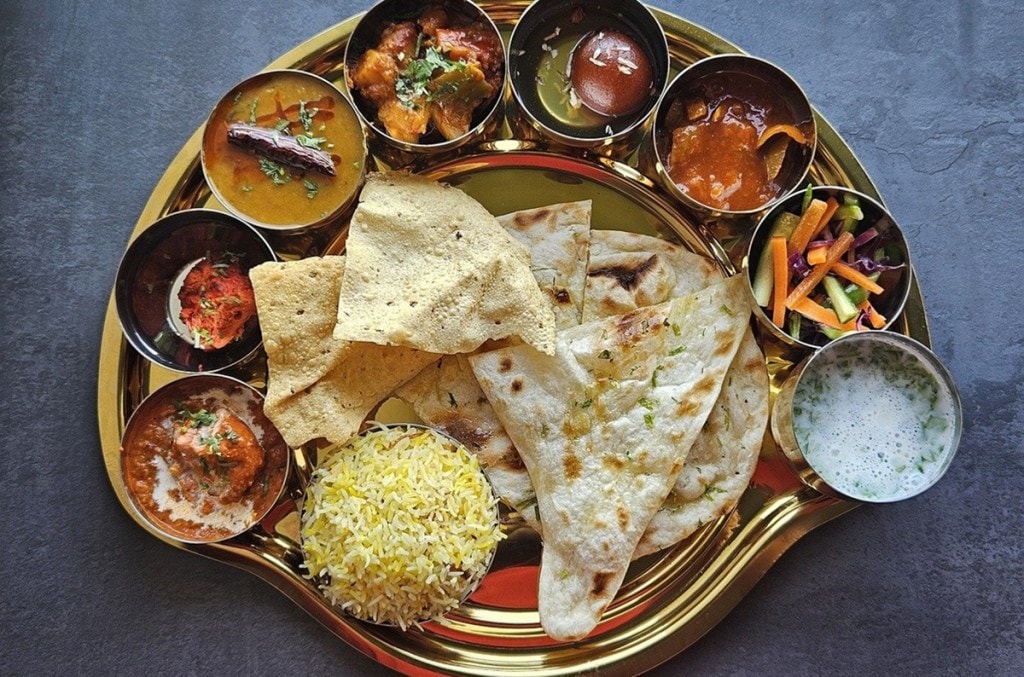Even as the cost of both home-cooked veg and non-veg thalis increased in the month of January as compared to the same period last year, the latter posted a jump of 17 per cent while the vegetarian thali went up by 2 per cent. This was largely due to the elevated broiler prices and a low base, stated Crisil’s monthly Roti Rice Rate report. For months, consumers have been paying more for the veg thali due to higher vegetable prices, particularly the rise in prices of onion, tomato and potato. However, in December, the price of non-veg thali rose up twice as fast as the veg thali as the price of broiler had gone up by an estimated 20 per cent YoY during the month.
The average cost of preparing a thali at home is calculated based on input prices prevailing in north, south, east and west India. The monthly change reflects the impact on the common man’s expenditure. The data also reveals the ingredients (cereals, pulses, broilers, vegetables, spices, edible oil and cooking gas) driving the change in the cost of the thali.
A veg thali comprises roti, vegetables (onion, tomato and potato), rice, dal, curd and salad; and a non-veg thali comprises the same elements except for dal, which is replaced by chicken (broiler).
Pushan Sharma, Director- Research, Crisil Intelligence, said, “The cost of preparation of home-cooked vegetarian and non-vegetarian thalis alike increased on-year in January 2025. The rate of increase, though, varied significantly – while the cost of vegetarian thali rose 2 per cent, that of non-vegetarian thali surged 17 per cent.”
According to the CRISIL MI&A Research estimates, the cost of home-cooked veg thali increased by 2 per cent. The report maintained that this was attributed to a surge of 35 per cent in prices of potato on a low base of last year to Rs 31/kg in January 2025 from Rs 23/kg in January 2024. Prices of pulses, which account for 9 per cent of the veg thali cost, went up by 7 per cent on-year in January due to an estimated 7 per cent YoY dip in production between July 2023-June 2024. Further, a 17 per cent YoY jump in vegetable oil too added to the cost. However, it stated that an 11 per cent drop in LPG fuel cost at Rs 803 per 14.2 kg LPG cylinder in Delhi from Rs 903 last year, provided a partial offset.
Meanwhile, the cost for non-veg thali surged by 17 per cent driven by an estimated 33 per cent on-year rise in broiler prices. Broilers account for around 50 per cent of the non-veg thali cost. Pushan Sharma said, “The jump in non-vegetarian thali cost was driven by a 33 per cent on-year rise in broiler chicken prices due to a low base of the year-ago period when broiler prices dropped due to excess supply. The cost of non-vegetarian thali is expected to remain elevated on-year. The low-base effect is likely to continue pushing broiler prices higher. Additionally, elevated feed cost—driven by rising maize prices—will contribute to the increase in broiler prices, exerting upward pressure on the overall cost of non-vegetarian thali.”
Now, on a month-on-month basis, the cost of a veg thali declined by 9 per cent in January, while that of non-veg thali dropped by 4 per cent. During January, tomato prices fell by 34 per cent on-month driven by fresh rabi arrivals. A 16 per cent and 21 per cent on-month drop in potato and onion prices respectively further supported the decline in cost. The non-veg thali cost drop, though at a slower pace, was attributed to an estimated 1 per cent rise in broiler prices on-month.

